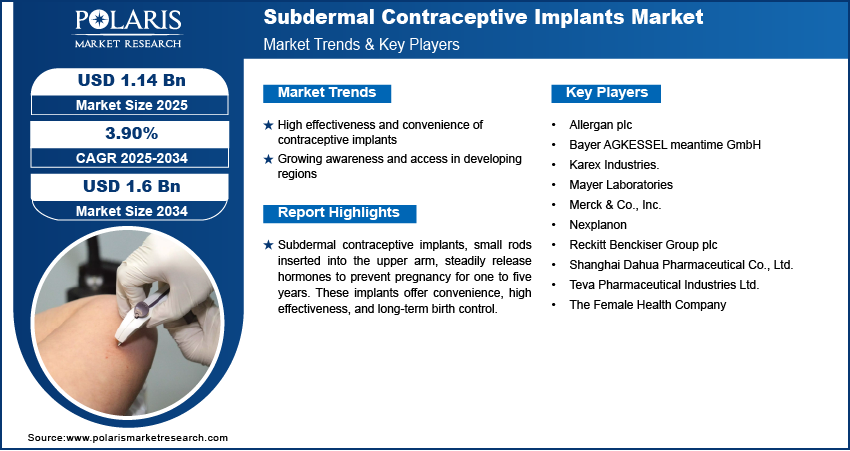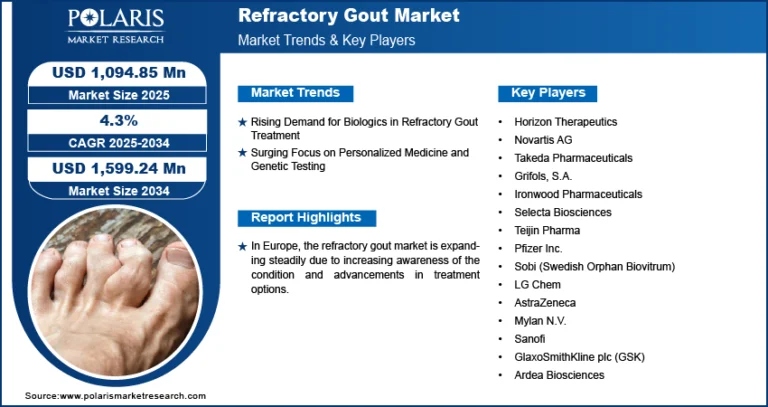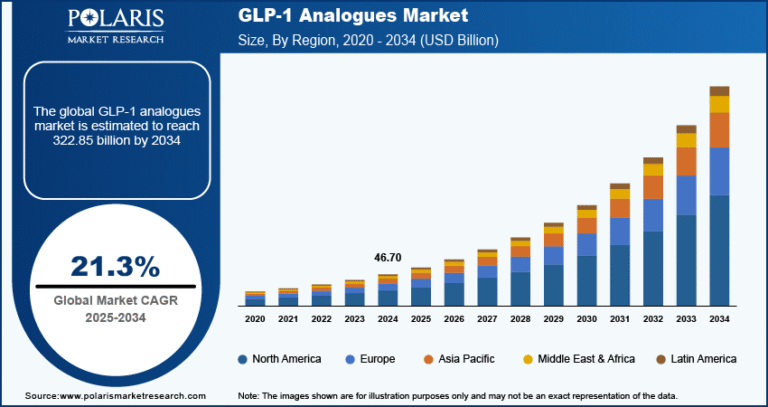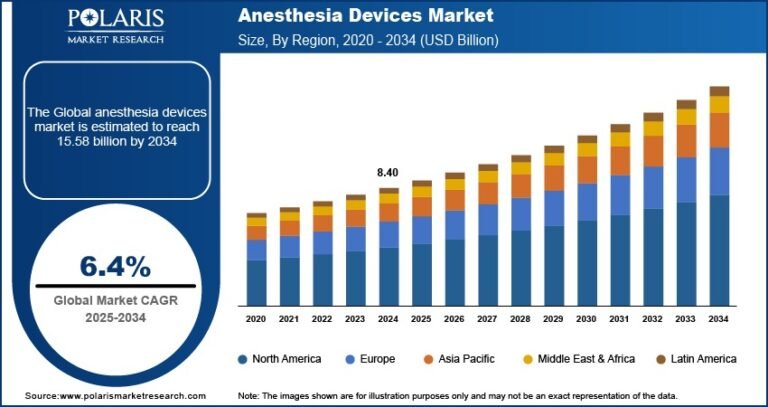The Subdermal Contraceptive Implants Market is projected to be worth $1.6 billion by 2034, growing at a steady CAGR of 3.90%.

The global subdermal contraceptive implants market was valued at USD 1.1 billion in 2024 and is anticipated to grow at a CAGR of 3.90% from 2025 to 2034. The market is expanding due to growing awareness of long-acting reversible contraception methods.
Market Trends & Insights:
- Shift Toward Long-Acting Contraceptives: There is a clear move from short-term methods to long-acting solutions like implants for greater convenience and reduced risk of user error.
- Growing Focus on Women’s Reproductive Autonomy: Rising advocacy for women’s health and informed contraceptive choices is positively influencing market adoption.
- Government & NGO Initiatives: Public health campaigns promoting population control and reproductive health are driving uptake in both developed and emerging economies.
- Technological Improvements: Advancements in implant design, insertion techniques, and hormone delivery systems are enhancing patient comfort and reducing side effects.
- Youth & Urban Adoption: Increasing awareness among younger, urban populations about safe, low-maintenance contraceptive options is fueling market growth.
Market Size & Forecast
Market size value in 2025 USD – 1.14 billion
Revenue forecast in 2034 USD – 1.6 billion
CAGR – 3.90% from 2025 – 2034
Request for Free Sample:
Market Overview:
The subdermal contraceptive implants market is gaining significant traction due to increasing demand for long-acting reversible contraceptives (LARCs). These small, flexible rods inserted under the skin offer extended protection—typically up to three years—by gradually releasing hormones to prevent pregnancy. Their high efficacy, low maintenance, and discreet nature are making them a preferred choice among women seeking reliable and reversible birth control options. The market is expanding globally, especially in regions with rising awareness and improving access to family planning services.
Market Growth Drivers:
- High Efficacy and Reversibility: Subdermal implants offer one of the most effective forms of reversible contraception with a quick return to fertility after removal.
- Low Maintenance and Convenience: Once implanted, users do not need to take daily or monthly actions, increasing compliance and reliability.
- Expanding Healthcare Access: Growth in healthcare infrastructure and access to trained professionals is making implant procedures more widely available.
- Rising Global Population Concerns: Efforts to manage population growth and reduce unplanned pregnancies are accelerating the adoption of long-term contraceptives.
Market Challenges:
- High Initial Cost and Limited Insurance Coverage: Subdermal Contraceptive Implants Although cost-effective over time, upfront expenses may deter some users, especially in low-income regions.
- Awareness Gaps and Cultural Barriers: Misconceptions, lack of awareness, or cultural resistance to contraceptive use can hinder market growth.
- Access to Trained Providers: Proper insertion and removal require skilled healthcare professionals, which may not be available in rural or underserved areas.
- Hormonal Side Effects: Concerns about hormonal side effects, including mood changes and irregular bleeding, may reduce acceptability among some users.





